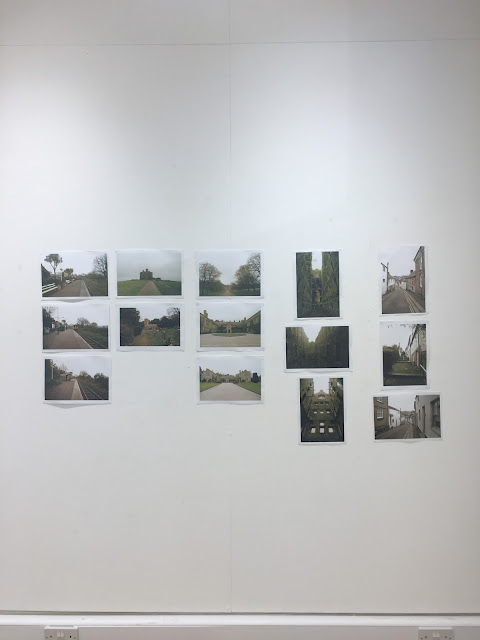As most of my research so far has led me towards documentary projects that use landscapes to tell different stories, I decided to look for a project that has a haunted subject matter similar to the kind of subject matter I will be exploring with my SDA work. This led me to Edward Thompson’s The Village.
Edward Thompson is a British documentary photographer and his The Village series is part of a larger body of work that makes up the content for his The Unseen book. In which all the series of images in the book were photographed using the last 52 rolls of Kodak Aerochrome Infrared film in locations across the world. Thompson used this to capture subject matters that are said to contain things that infrared film could possibly capture such as drought and radiation.
The Village became a project for Thompson when he learnt that the village of Pluckley in Kent is the most haunted village in the U.K and that infrared film could possibly capture the kinds of apparitions that were said to haunt this village. What is interesting about this series of landscapes of this village is that even though we do not see any apparitions in the images themselves the blood red foliage created by the colour shift of infrared film is particularly sinister in itself. It changes the green landscape we know of British rural areas into a sea of red texture.
These landscape photographs provide a surreal view of rural Kent. Referred to as the garden of England the infrared film juxtaposes this by showing us a very sinister version of this place. The images look so otherworldly as though they are from science fiction stories such as H.G Wells War of the Worlds.
What interests me about the use of infrared film to photograph these landscapes is the way it makes you question the subject matter. Knowing that this is supposedly the most haunted place in Britain, having Pluckley presented in this way makes us question the boundaries of our own senses, and whether there are things we do not notice due to boundaries in how much we can perceive in the landscapes surrounding us.

The photograph of a horse shown above refers to one of the stories of hauntings about a tale of a phantom horse and coach passing through the village. This photograph shows just how powerful this infrared film is in making such an innocent subject matter appear so menacing. I think this aesthetic decision by Thompson is really powerful especially in the way it looks to be so natural of the landscape in this photograph. Although no actual ghosts were revealed through the film the calmness of these landscapes juxtaposed with the brooding feel of this deep blood like red, suggests very much the context of these landscapes. I cannot find captioning for this series and do not have access to The Unseen book therefore I do not know if captions are use to extend the meaning of these photographs. However I do think the use of infrared film alone is powerful enough in making the subject matter of these landscapes clear for a viewer.
Looking at this series has made me consider more about what I can illustrate as a documentary photographer in revisiting places where a story has already been said to have occurred. I am not intending to go to these places to photograph ghosts therefore thinking about representing these places has been the biggest decision for me and is something I now need to experiment with. Which I will do by visiting some of these locations and experimenting with different film, lenses and other ways I can approach photographing these places.






















































